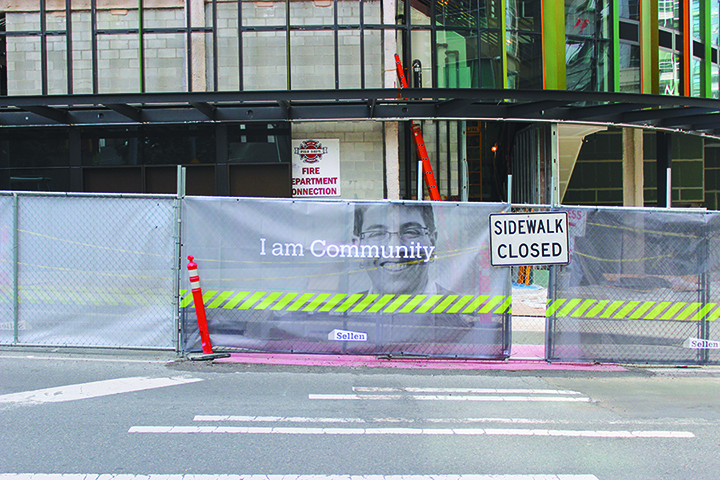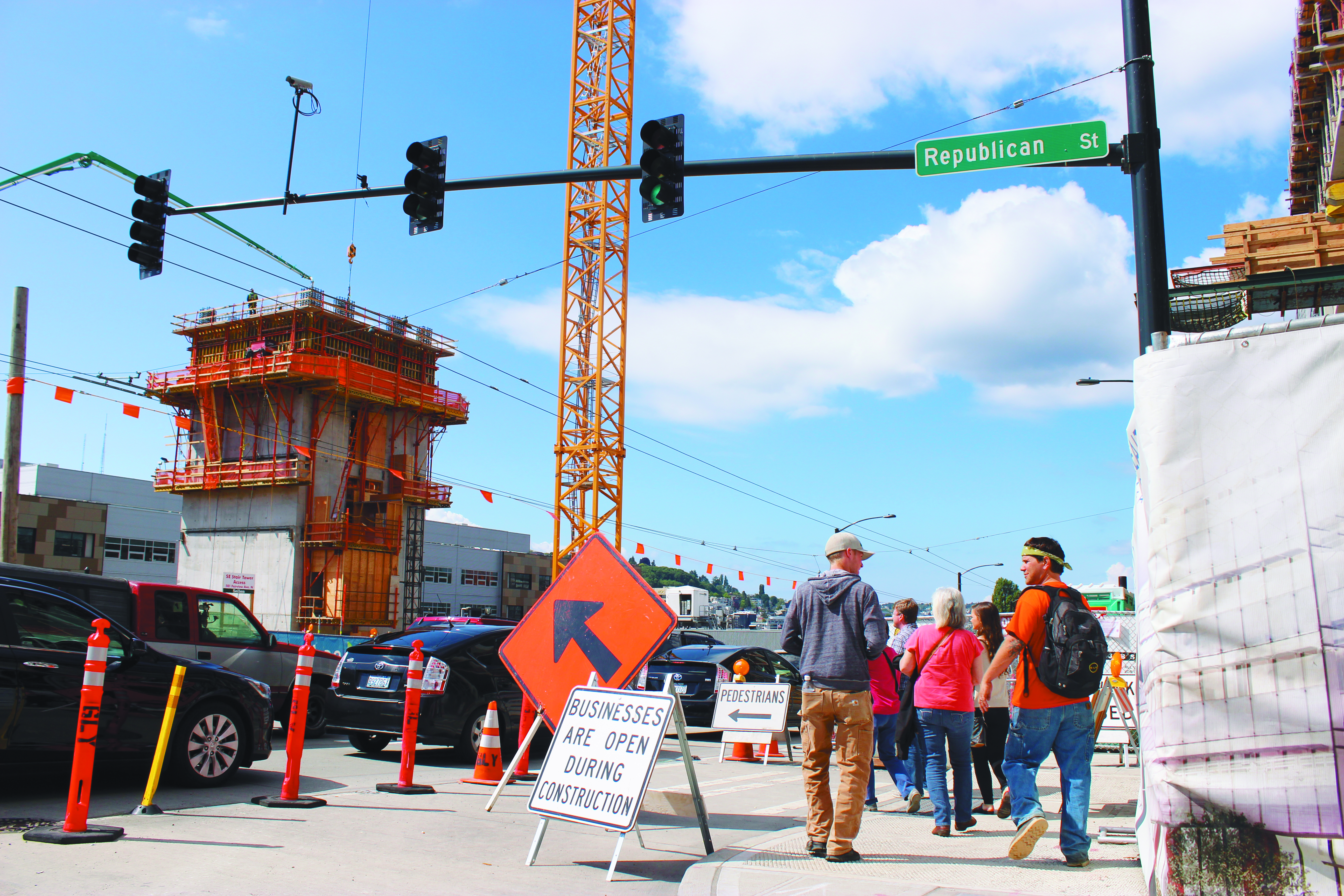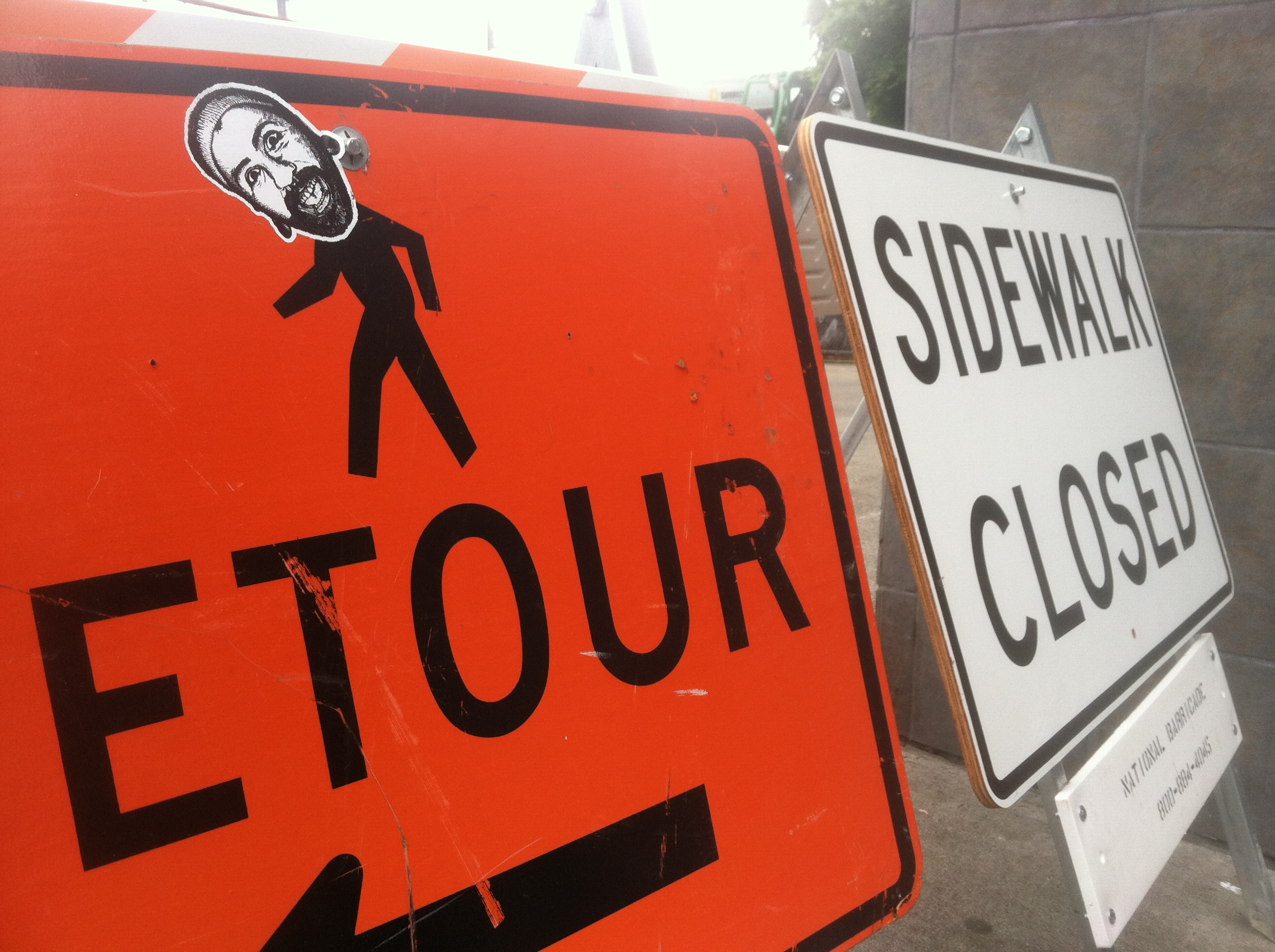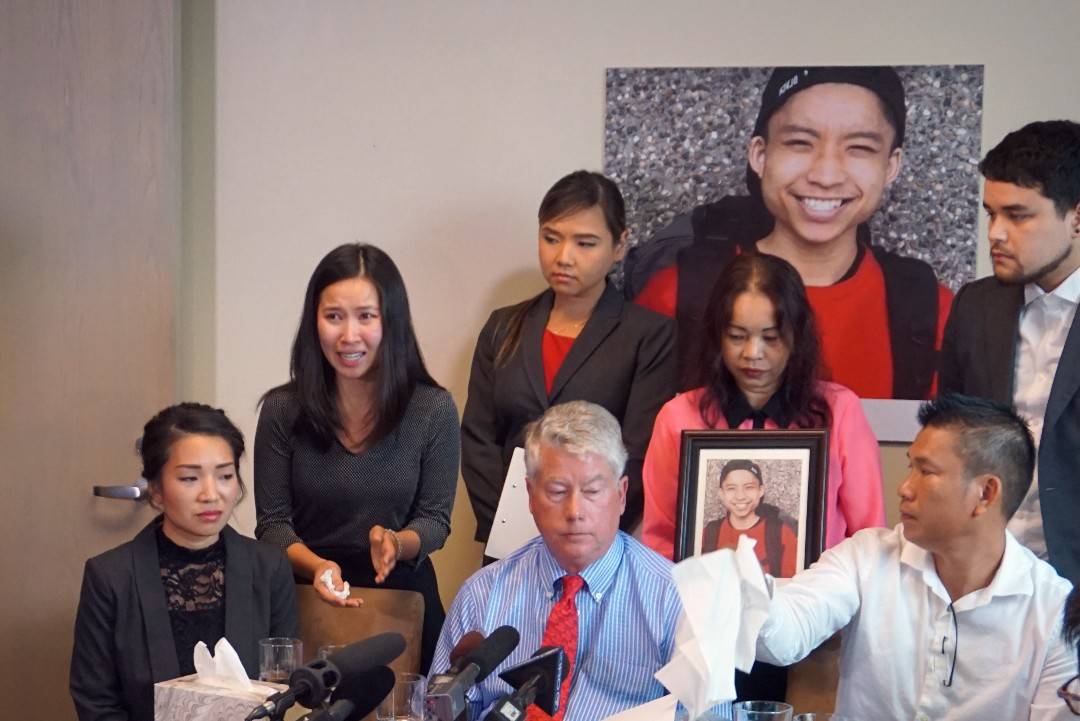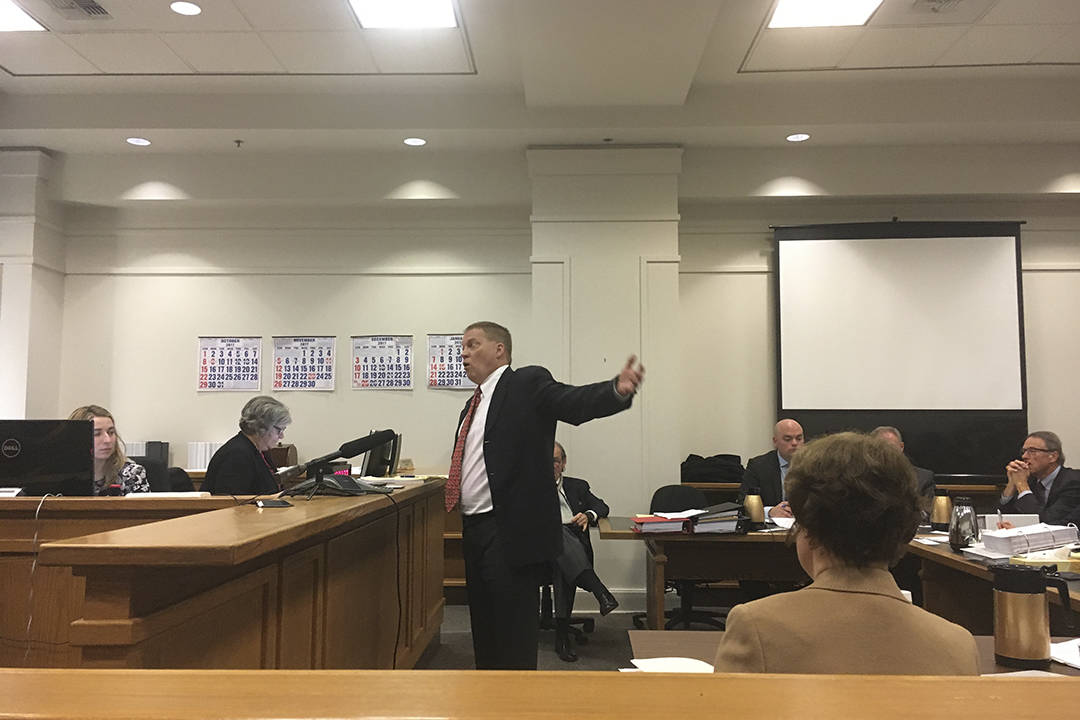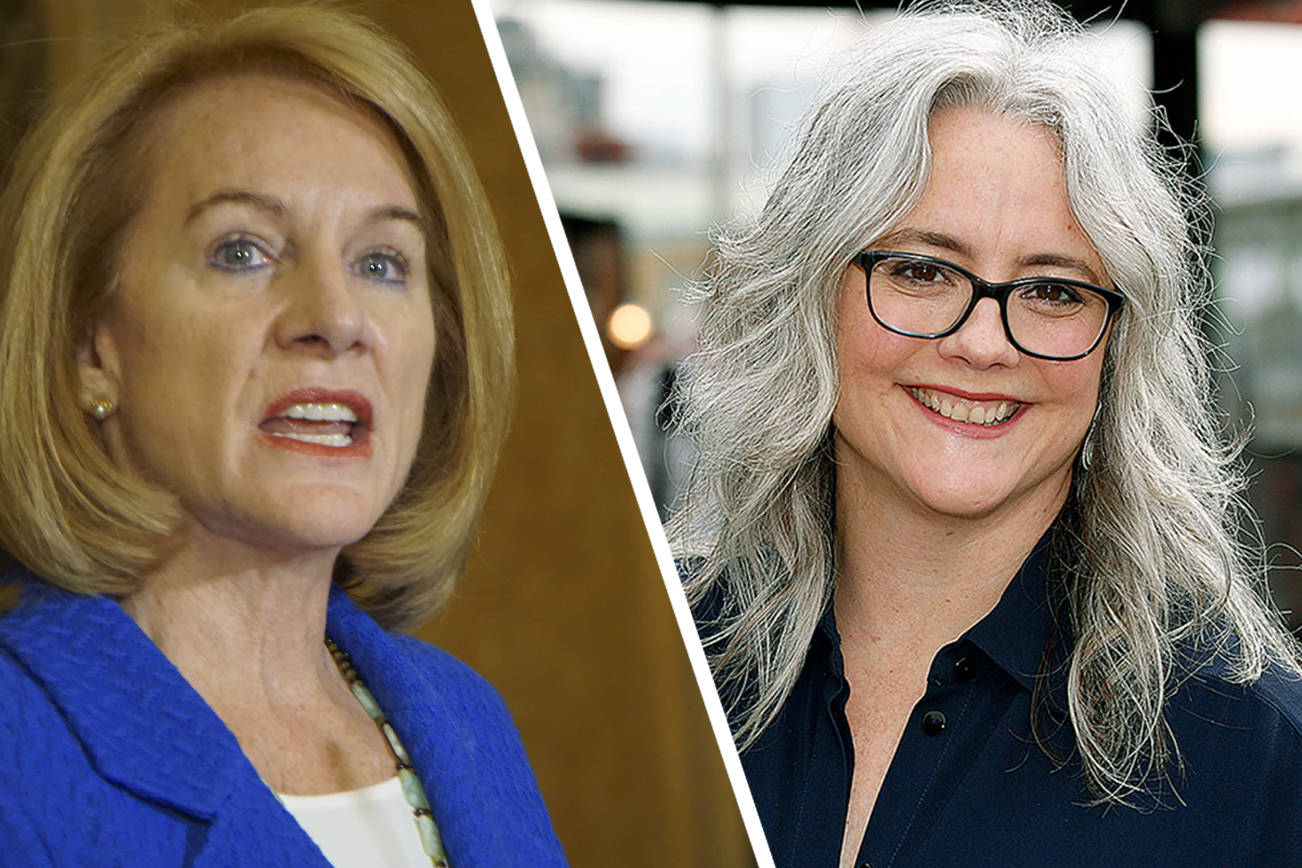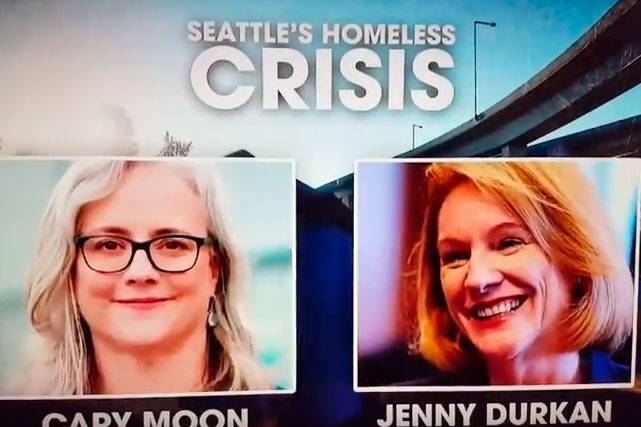Coming upon Republican and Fairview, Lisa Quinn needs a moment.
“Oh, wow. Now this is a problem,” she says. “Give me a second and let me take this all in.”
Before her is a sea of orange construction paraphernalia sprouting from three of the intersection’s four corners. For the time being, this intersection could be considered ground zero for the South Lake Union development boom, a boom that has caused Seattle a considerable amount of heartburn as it contemplates its once-funky soul. But Quinn’s concerns are far more pedestrian. Literally.
“Look, if you live in that building and have to get to the other side of the street, they expect you to backtrack to that crosswalk. That’s just not reality,” she says, pointing at one sidewalk closed on account of construction. Indeed, over time, several pedestrians will be observed wandering into traffic rather than taking the time to navigate the maze of neon-orange pylons and lattices erected on their behalf elsewhere. “This just isn’t a pleasant place to be.”
Quinn is executive director of Feet First, a pedestrian advocacy nonprofit based in Pioneer Square. She’s agreed to walk around South Lake Union on a too-hot afternoon to assess how the city is doing for her oft-forgotten constituency as it manages the crane-fueled orgy that is Amazonia-on-Westlake. Feet First doesn’t ask for perfection, but by her group’s reckoning, heavy construction shouldn’t mean that people have to cross the street four times just to walk four blocks, or that people in wheelchairs should simply stay away.
South Lake Union challenges even those modest goals.
It’s not all bad. Quinn applauds some green space by the sidewalk at a Microsoft building on Westlake and compliments some pedestrian “walk-through scaffolding” that until recently was rare in Seattle. But much is still left to be desired.
“Look at that. You have the ‘sidewalk closed’ sign over by the dumpster,” she says, pointing to a construction site on Thomas. “That’s not going to help anyone.” Further down the street, she whips out her iPhone to take a photo of another “sidewalk closed” sign affixed to a street post with rusted craft wire, making a still-open stretch of sidewalk totally inaccessible if you’re in a wheelchair. “This is just lazy,” she clucks. “The reason why the sign is there is not supporting the reason why the sign is there.”
By the city’s own admission, Seattle is just now getting a handle on ensuring construction doesn’t have an unreasonable impact on walkers.
“If you remember in late 2013 and early 2014, in the Pike/Pine corridor or Fifth Avenue downtown, you would have had to cross the street maybe four times,” says Brian dePlace, director of the Street Use Division at Seattle Department of Transportation. “Each individual project was doing a good job, but in total it wasn’t working. We saw that if we could take a step back, we could start to coordinate the impact.”
DePlace says the city began working “in earnest” in 2013 to figure out how to maintain pedestrian access around heavy construction areas, and started putting policies into place about a year ago. The keystone of that effort is creating so-called “construction hubs,” looking at clusters of construction sites and getting the developers to coordinate sidewalk closures so as to limit the impact.
He says it’s been effective. Pointing back to the issues on Pike/Pine and Fifth, he says, “You don’t have that anymore, even though there are more projects there now.”
“We also (started) coordinated a weekly coordination meeting with a contractor. You could come into our offices and tell us what you were doing and what the impacts on pedestrians were. The joke was, we’d bring people in, lock them in the room, and make them talk,” he said. But now, contractors appreciate the ability to know what one another are doing.
“We are shifting to prioritizing pedestrian access,” dePlace concludes.
Quinn, who has worked with the city on this issue, says dePlace has done a commendable job, and that now one of the city’s biggest challenges is getting developers to accept a philosophy of walking access.
Still, pedestrian advocates right now give Seattle about a B-minus on the issue, with a “Shows improvement” note written in the margin.
“One of the top complaints I hear from residents and visitors getting around downtown is it is difficult to get to where you want to go without crossing the street for construction,” says Troy Heerwagen, who runs the blog Walking in Seattle. “If you compare Seattle to other cities, those cities have a lot of construction as well, but in many cases they’ll put in metal corridors in the street to keep pedestrians moving around a construction site.
“I don’t think the city is able to keep up with the pace of construction . . . I think they’re better than what they were a few years ago, but they have a long ways to go.”
The appropriately named George Walker, stopped as he strolled on Fairview, is also unimpressed. “It’s terrible. It’s worse every time. … You read a lot about bicyclists, but the pedestrians get left out.”
Then again, Henry and Olga Butler didn’t seem to mind it. “We find it interesting,” Henry says, “Looking at all the progress they are making.”
Indeed, Heerwagen conceeds that, all things considered, this is a good problem for a city to have.
“It’s not an issue if you don’t have growth,” he says.
Perhaps the best vote of confidence in the city’s efforts is the sheer volume of pedestrians in South Lake Union. It’s not so bad that people are staying away. As Quinn concludes her tour, she and a reporter stand at the corner of Denny and Fairview amid a bustle of professionals. Those walking down Fairview skirt some orange cones arranged haphazardly on the sidewalk, where the ropes of a dangling window-washer swing wildly at them as they pass.
Looking up and then down the rope, Quinn can only laugh. She lets it pass without comment.
